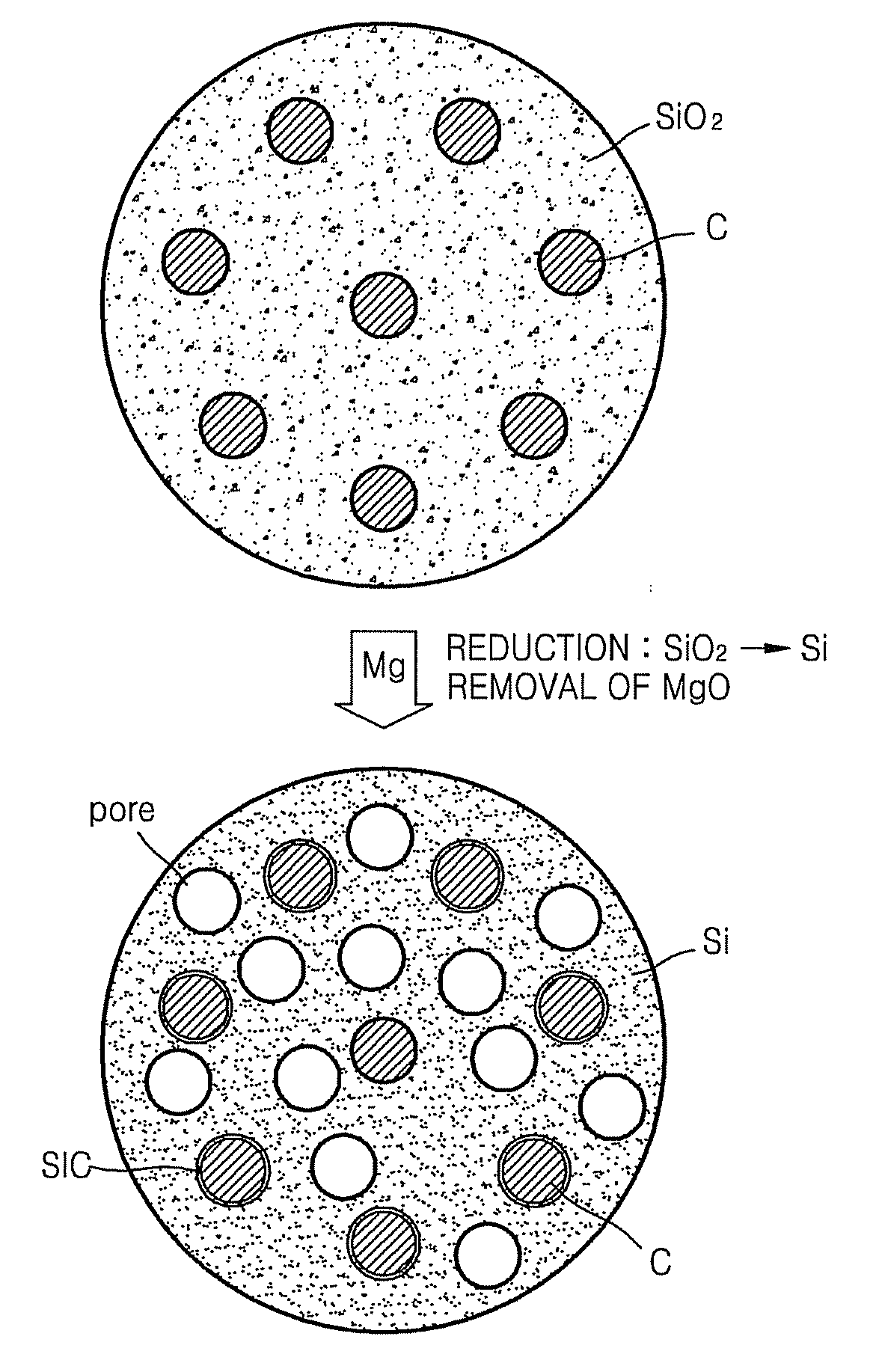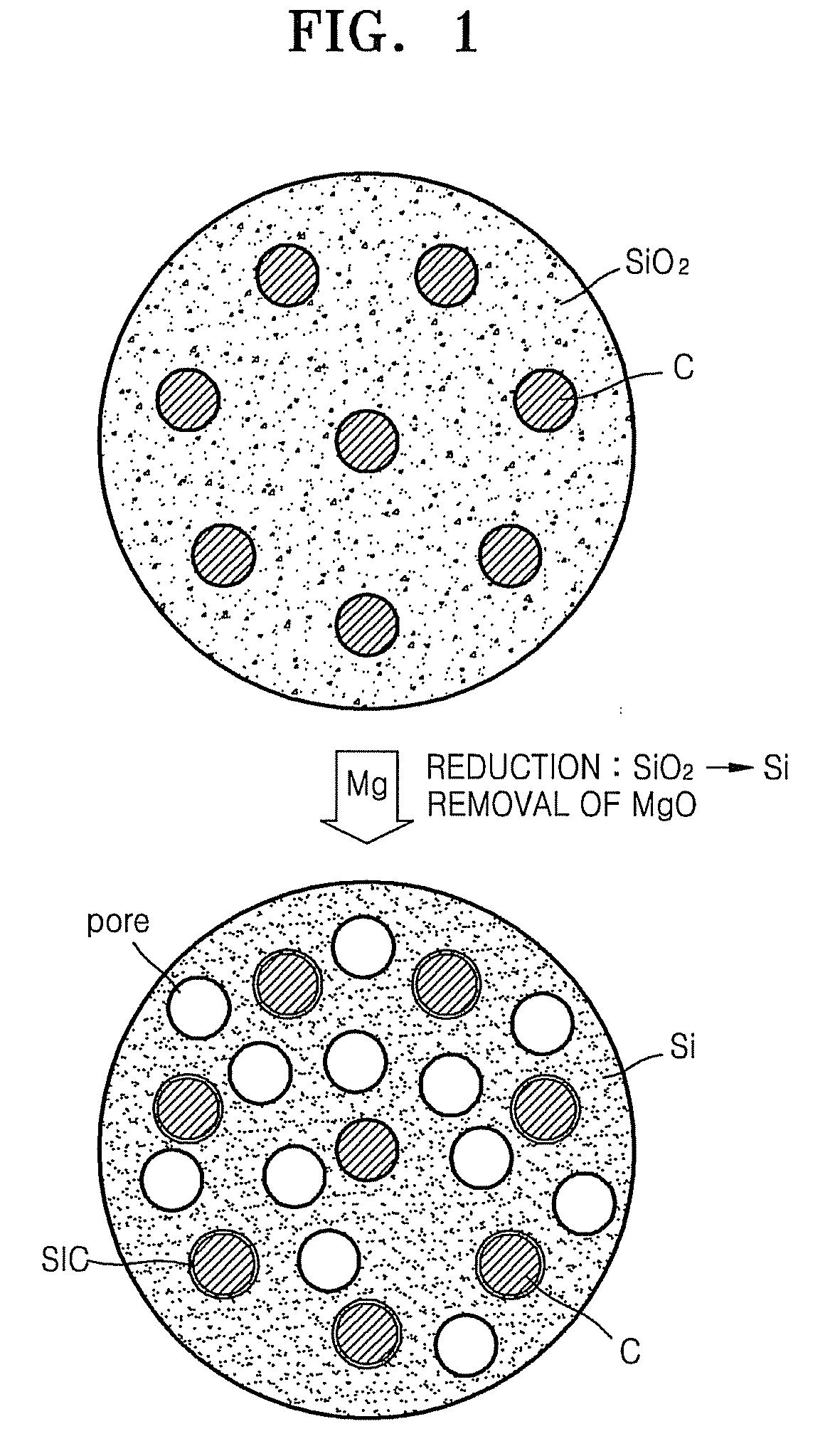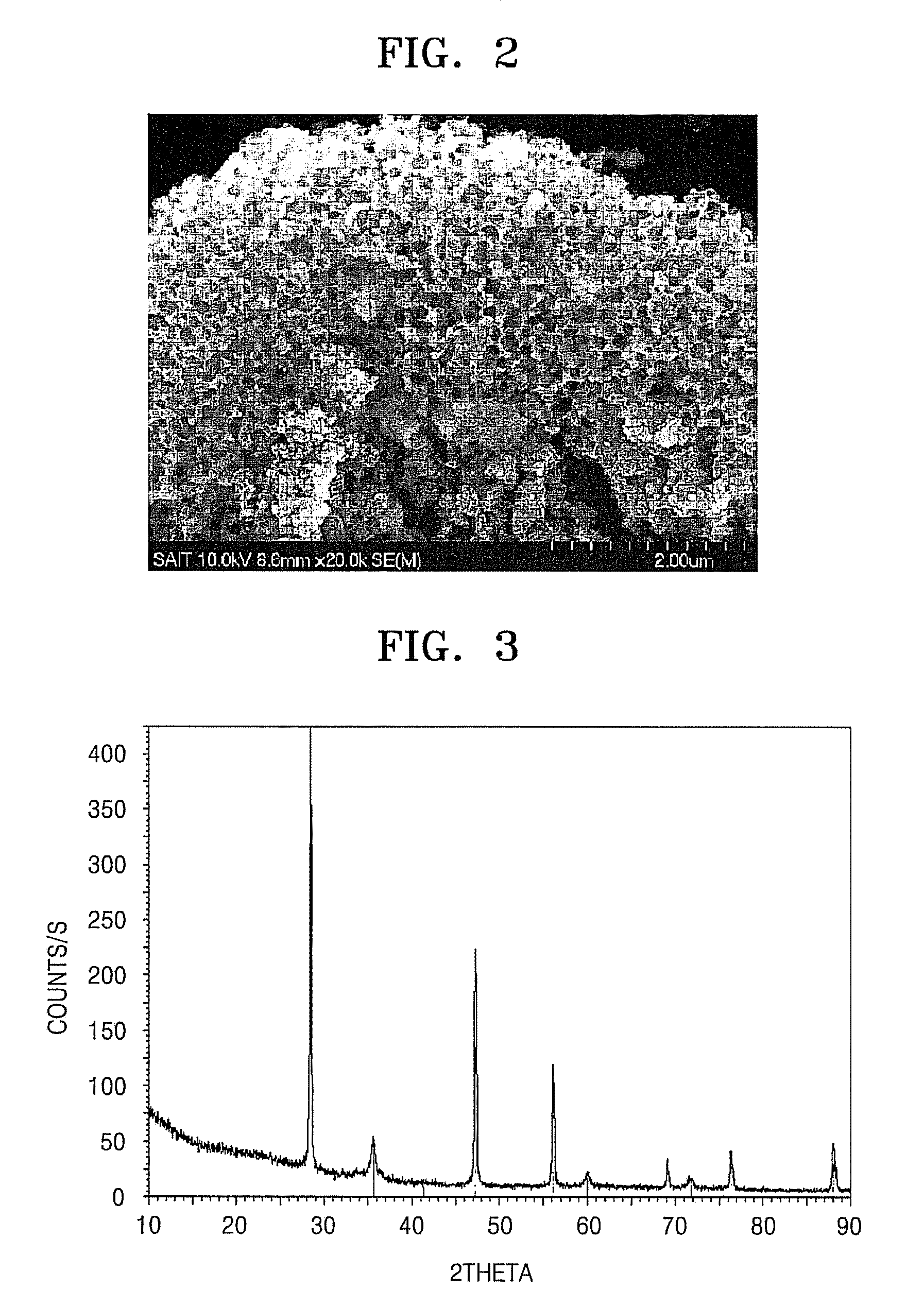Si/c composite, anode active materials, and lithium battery including the same
a lithium battery and composite technology, applied in the direction of cell components, conductors, other chemical processes, etc., can solve the problems of high risk of explosion, many charge/discharge reactions irreversible, and theoretical capacity is not high enough for future lithium batteries, and achieve high initial coulombic efficiency and good capacity retention
- Summary
- Abstract
- Description
- Claims
- Application Information
AI Technical Summary
Benefits of technology
Problems solved by technology
Method used
Image
Examples
example 1
[0086]0.12 g of conductive carbon particles treated with acid (Super-P, TimCal Co.), 5 g of ethanol, and 8.07 g of tetraethyl ortho silicate (TEOS) were added with stirring to a 50 ml vial, and 2.8 g of a 1 M aqueous hydrochloric acid solution was slowly added to the resulting mixture. The resulting mixture was subjected to ultrasonic treatment for 1 hour, followed by reacting the mixture in a bath maintained at 60° C. until the mixture was gelled. The gelled resultant product was further dried in an oven maintained at 80° C., obtaining an SiO2 / C composite. 0.1 g of the obtained SiO2 / C composite and 0.085 g of magnesium particles were heat-treated under a flow of argon gas at 900° C. The resultant product was stirred in 0.1 M aqueous hydrochloric acid for 24 hours, filtered using a filter paper, and dried in an oven maintained at 80° C., thereby preparing an active material.
example 2
[0087]0.2 g of the active material prepared in Example 1, 5 wt % of a pitch and 1.6 g of tetrahydrofuran (THF) were mixed, and dried at 60° C. with stirring to evaporate the THF. The dried product was subjected to heat treatment under a flow of argon at 900° C., thereby preparing an anode active material.
examples 3 and 4
[0091]0.03 g of each of the anode active materials prepared in Examples 1 and 2, and 0.06 g of graphite (SFG6, TimCal) were mixed, thereby preparing active material composites.
PUM
| Property | Measurement | Unit |
|---|---|---|
| Temperature | aaaaa | aaaaa |
| Temperature | aaaaa | aaaaa |
| Time | aaaaa | aaaaa |
Abstract
Description
Claims
Application Information
 Login to View More
Login to View More - R&D
- Intellectual Property
- Life Sciences
- Materials
- Tech Scout
- Unparalleled Data Quality
- Higher Quality Content
- 60% Fewer Hallucinations
Browse by: Latest US Patents, China's latest patents, Technical Efficacy Thesaurus, Application Domain, Technology Topic, Popular Technical Reports.
© 2025 PatSnap. All rights reserved.Legal|Privacy policy|Modern Slavery Act Transparency Statement|Sitemap|About US| Contact US: help@patsnap.com



